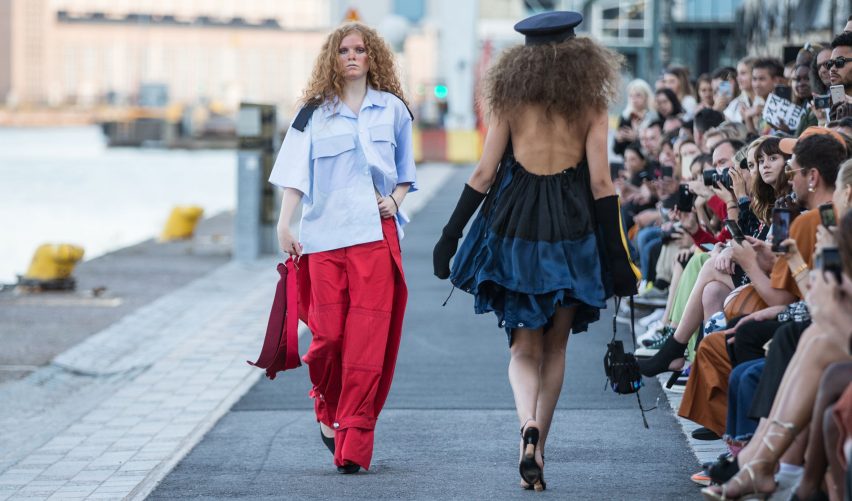
Five designers making fashion more sustainable at Helsinki Fashion Week 2019
With leather banned at the recent Helsinki Fashion Week, designers were exploring more eco-friendly materials and supply chains. Founder Evelyn Mora names the five designers that made the biggest impression.
The fifth Helsinki Fashion Week took place in the Finnish capital from 19 to 22 July. Although the event has been focused on sustainable fashion since launch, the 2019 edition was the first to ban leather from the catwalks.
Designers presented looks that brought together innovative new textiles, recycled materials and ethical manufacturing practices.
Mora has selected the five designers that most inspired her:
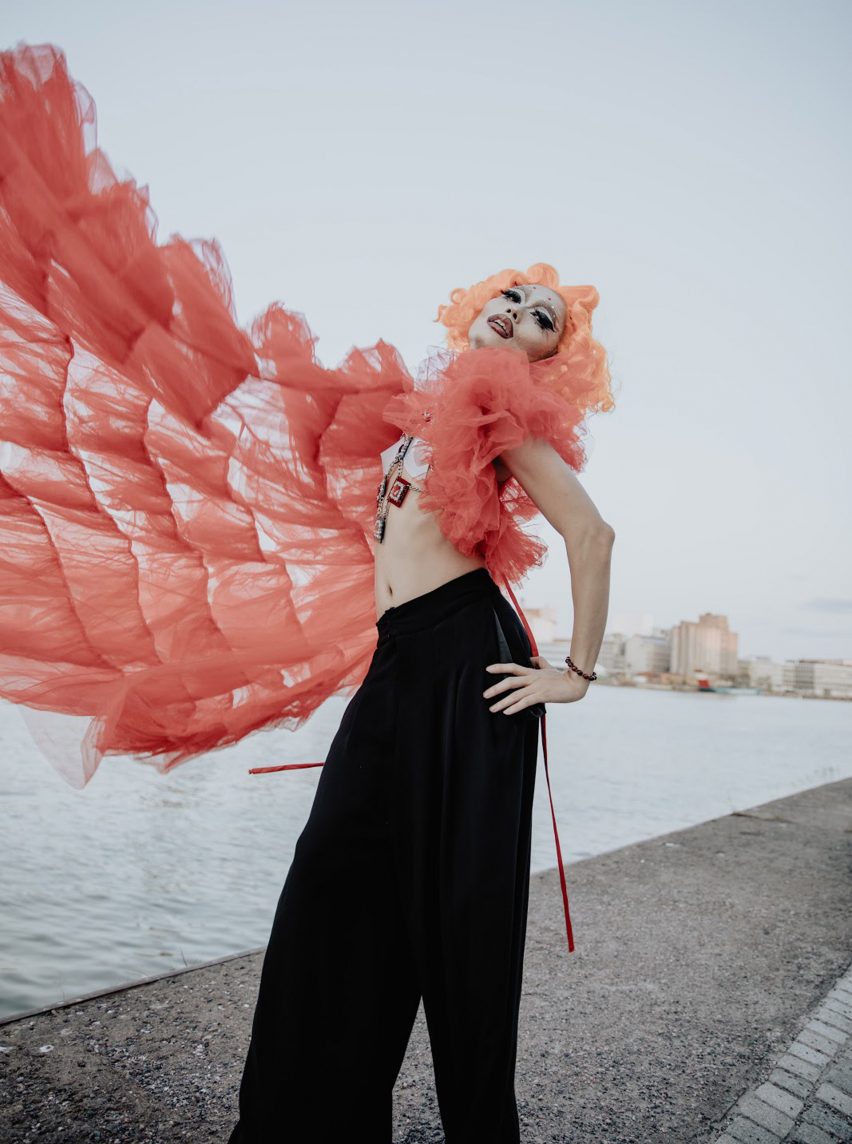
Patrick McDowell
Patrick McDowell was thrown into the spotlight last year with his graduate collection from Central Saint Martins. The British designer made garments using waste fabrics he sourced from Burberry – a brand that has been criticised for burning old stock – in a bid to change the system.
He is building on these ideas with his latest collection, which is designed to show that environmentally friendly clothing doesn't have to be boring.
"Fashion is not always about clothing, it's also about what you stand for," said Mora. "Patrick is making a statement, that creativity is something that we must still remember in sustainable fashion."
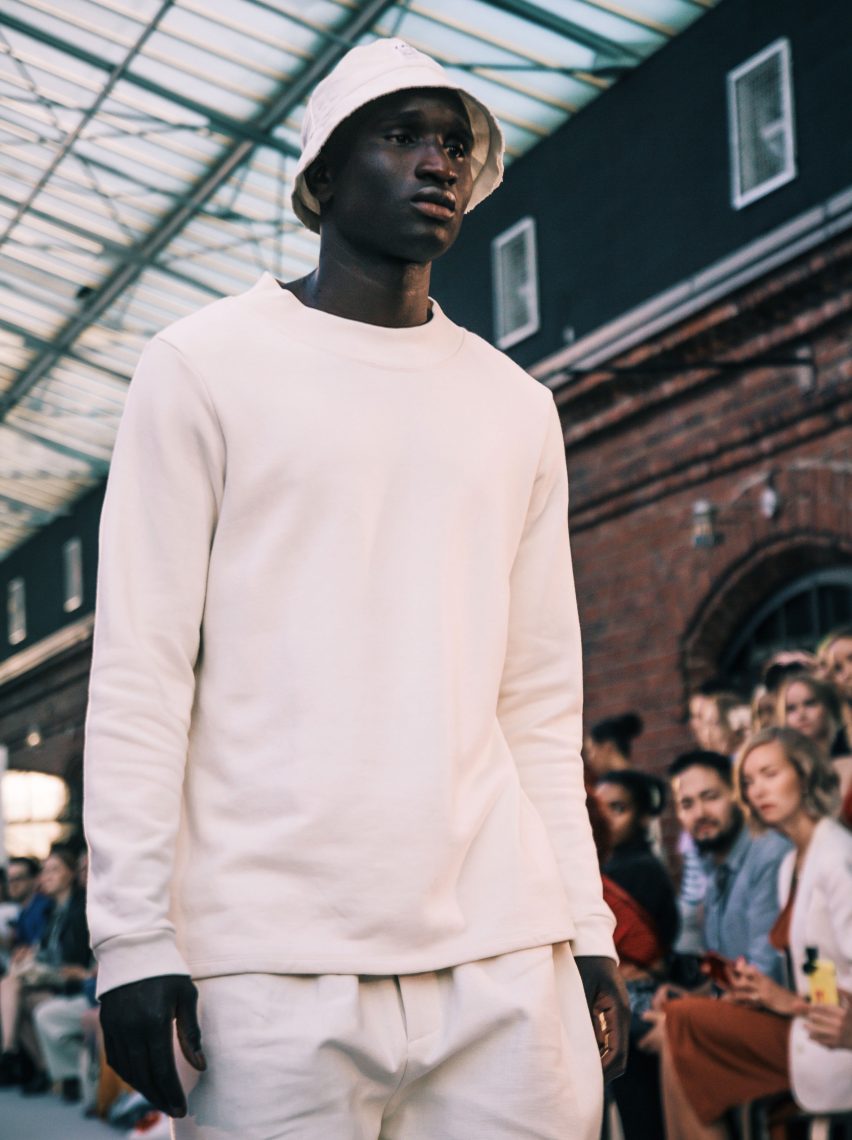
ABCH
Melbourne-based label ABCH promotes the circular economy in every collection. Led by designer Courtney Holm, it only uses raw materials that naturally biodegrade or can be reused, and it operates a recycling programme that helps to prevent old garments going into landfill.
At Helsinki Fashion Week, it presented a range of minimal pieces in simple shapes and basic colours, designed to be timeless and versatile.
"ABCH is one of the few commercial brands that has succeeded in not only making the industry more transparent but also in actively engaging with its audience to inspire them to make conscious choices," said Mora.
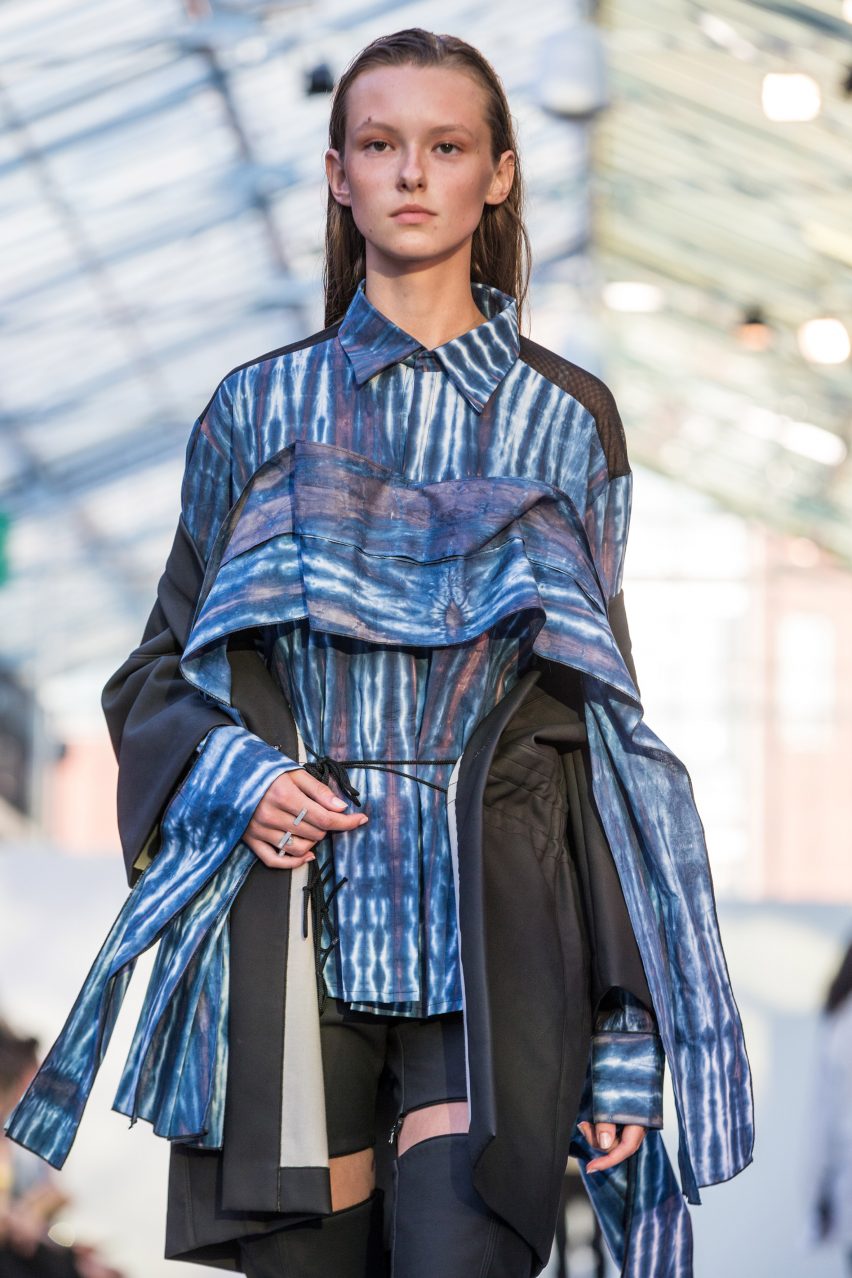
Shohei
Austrian fashion house Shohei describes its products as "eco-conscious contemporary collections for global progressives".
The new collection combines elements of classic Japanese and European design, and reinvents them in high-tech, sustainable fabrics. Highlights include a kimono style jacket and trousers with zippers, both made using a leather alternative by textile brand Ultrafabrics.
"We're showcasing sustainable designers that are globally interesting and speak to a global audience," said Mora.
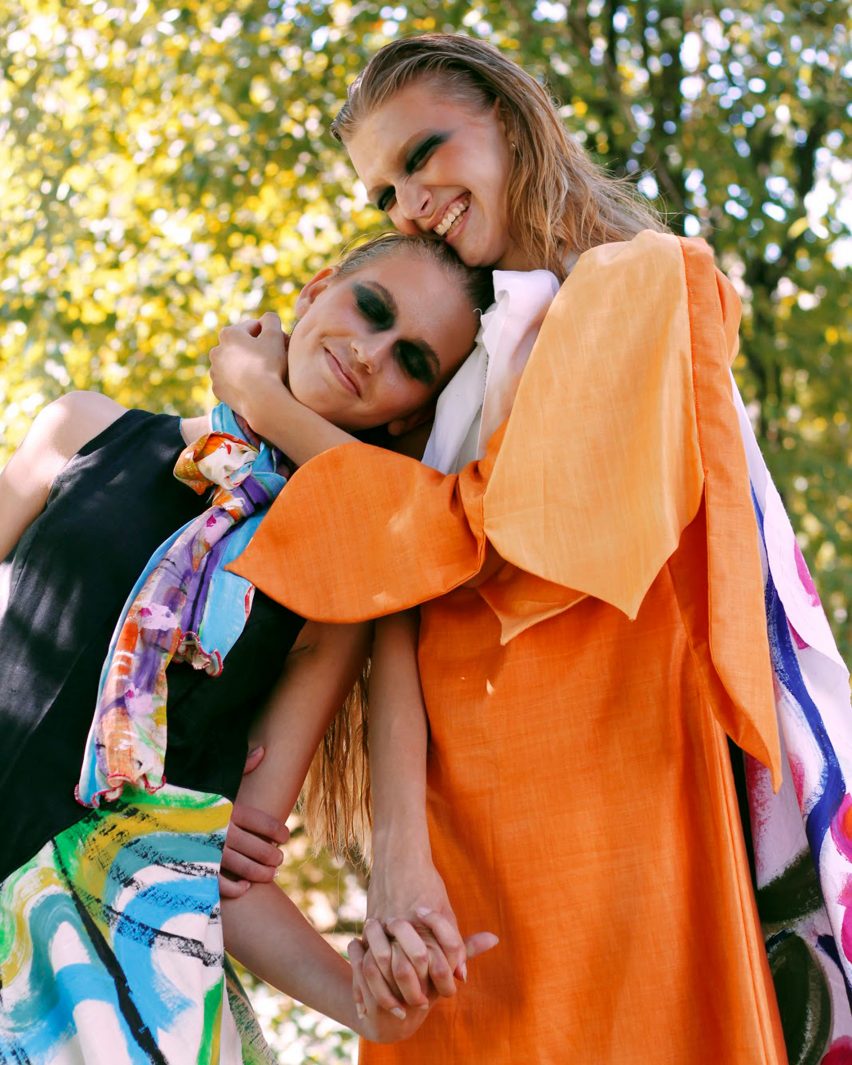
Mandali Mendrilla
Belgian designer Mandali Mendrilla is trying to promote a sustainable mindset in her collections. She only uses vegetarian-friendly materials, and combines these with a process she calls Yantra Couture, which involves creating custom patterns based on natural vibrations.
At Helsinki Fashion Week, the designer showed vividly coloured garments made using both recycled silk and peace silk, along with natural dyes and the dust of 16 crystals.
"Fashion is an industry where we can actually communicate sustainable values and encourage the younger generation to be aware and conscious of the decisions that they make every day," said Mora. "That spirituality is Mandali Mendrilla – it's mindfulness that she focuses on."
"I actually cried at her fashion show," she added. "She had bells attached to the models legs and I can't describe the powerful energy it created."
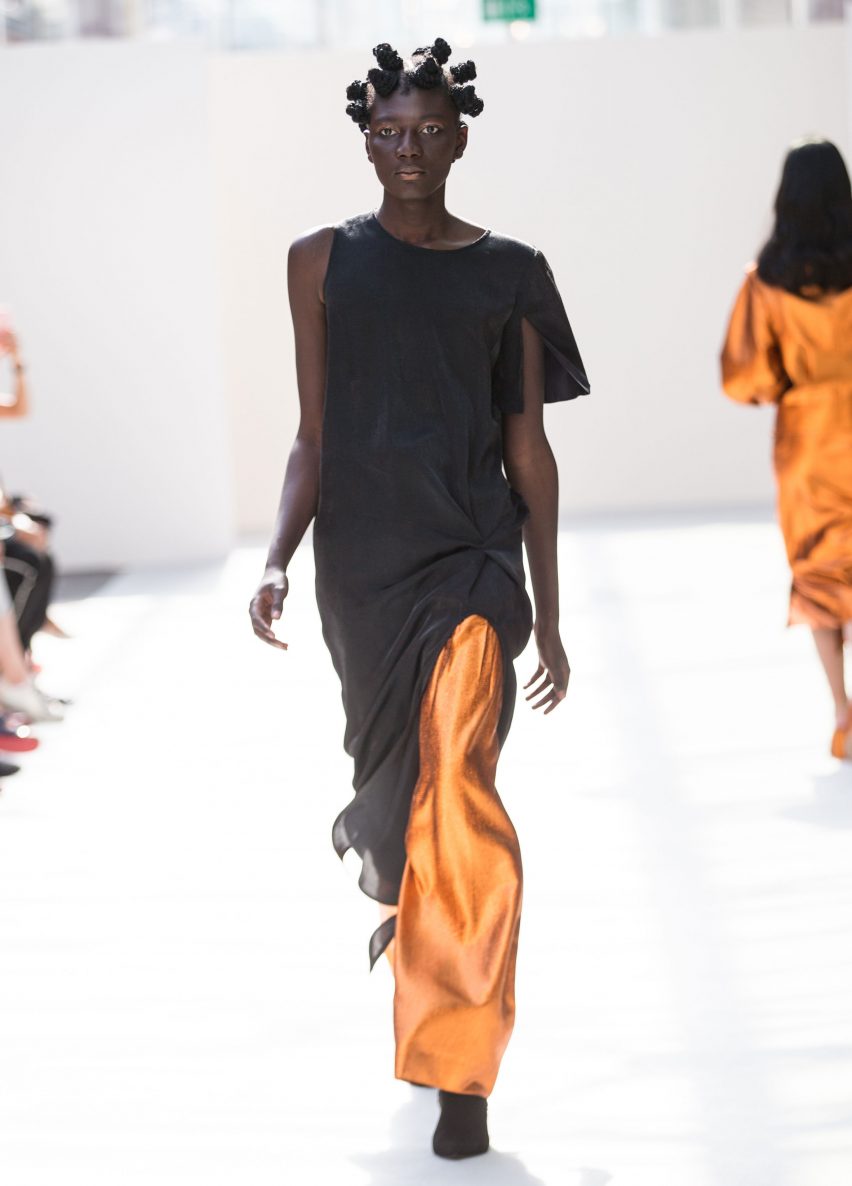
Kata Szegedi
Hungarian designer Kata Szegedi often uses custom-made and recycled fabrics in her designs, which brings greater transparency to the manufacturing process. Her latest collection sees her textiles transformed into immaculately tailored suits, dresses and playsuits.
"She really wants to embrace new textures," said Mora. "She takes vintage materials and reuses them, recycles them, in a way that brings the creative perspective of the designer forward."